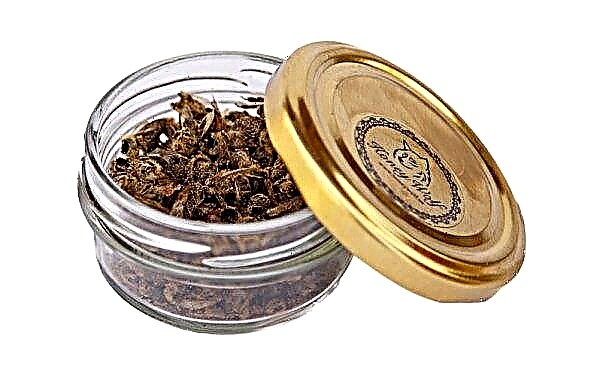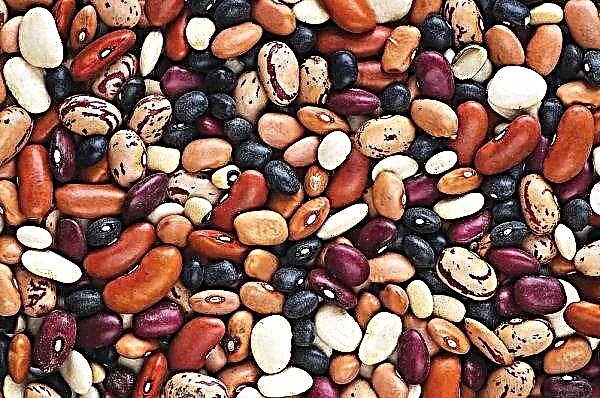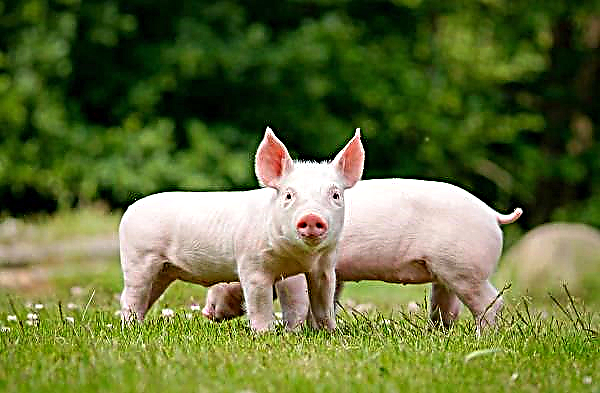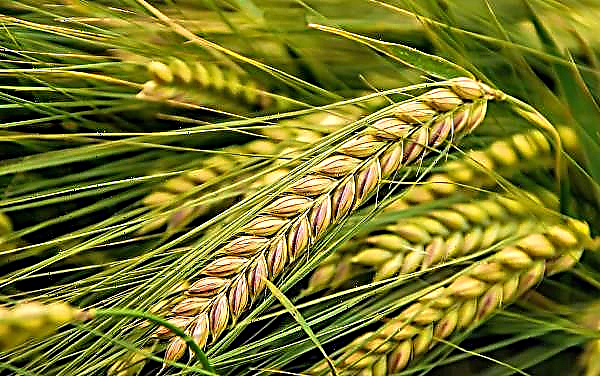Philippine Clodendrum is also sometimes called fragrant volcameria due to the pleasant sweet aroma of flowers. This evergreen shrub native to Japan and China, it can often be seen as a decorative plant in the home or office interior. In the article, we will consider how to properly care for Filipino clerodendrum and overcome possible difficulties in its cultivation.
Botanical description of the plant
The bush of this plant can grow quite high, reaching a height of 2 m. Large leaves up to 15 cm in size with long petioles are located on straight shoots. The leaf has a serrated edge, its surface with small tubercles, velvety.
Photo gallery
Clerodendrum flowers are grouped in a basket. Inflorescences are many-flowered, corymbose, with a diameter of up to 20–22 cm. The corolla has the correct funnel shape. In the natural environment, flowers have 5 petals, decorative belong to the terry variety. Flowers are very reminiscent of small roses, the edges of the petals of which are openwork (in decorative species), which gives the flower a more voluminous and weightless appearance. The aroma of flowering is very pleasant, sweet.| Root system | fragile |
| Stem | straight, slightly lowered |
| Leaf shape | heart shape |
| Leaf color | light green |
| Flower shape | symmetrical, corolla |
| Flower color | white, pink and white |
Growing conditions
Creating favorable conditions for Filipino clerodendrum promotes continuous, year-round flowering of the plant, with the exception of short-term interruptions that do not occur often, but end with an even more violent color.
Placement and lighting
Choosing a place to grow this shrub is a very crucial moment, since it significantly affects the vital activity of the plant. Clerodendrum is a very photophilous plant, and it needs to feel the sun's heat for at least 10 hours a day.
Lack of light can affect:
- growth of a decorative flower - it will stretch in length;
- flowering - it will be less intense and plentiful.
 When choosing a side of the world where the Filipino clerodendrum will feel optimal, the following factors should be considered:
When choosing a side of the world where the Filipino clerodendrum will feel optimal, the following factors should be considered:- east and west side - The best location for this decorative look;
- north - does not have enough light;
- South side provides sufficient access to the sun's rays, but their direct effect on the plant may be too aggressive, therefore it is necessary to create scattered radiation for it, making a slight shadow.
Important! From direct sunlight, delicate Filipino clerodendrum leaves can be severely affected and burns will appear on them.
Temperature mode
The plant cannot be called thermophilic: it prefers moderate temperatures, without jumps and drops. The optimal solution for constant flowering is to maintain the temperature at the same level throughout the year: at +18 ... + 25 ° C. If it is not possible to provide a 10-hour sunny day, then it is necessary to lower the temperature in the room where the Filipino clerodendrum grows. This will preserve the attractive appearance of the plant, preventing it from growing intensively with sparse flowering.
If it is not possible to provide a 10-hour sunny day, then it is necessary to lower the temperature in the room where the Filipino clerodendrum grows. This will preserve the attractive appearance of the plant, preventing it from growing intensively with sparse flowering.
Air humidity
The moisture content in the air should be moderate. On the one hand, too dry air in the winter due to the use of heating negatively affects the development of clerodendrum. On the other hand, dampness in the room is also unacceptable. To create the optimum level of humidity, the following measures should be taken:
- moisten the plant with a spray daily during the heating season;
- water for irrigation and irrigation should be at room temperature, but not cold.
Home Care
The content of the Philippine Clerodendrum is not too complicated. The basic requirements for caring for this plant will be discussed below.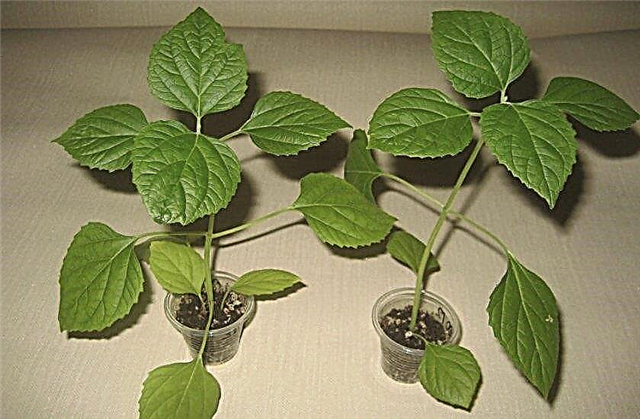
Watering
Clodendrum loves moisture, therefore, watering should be plentiful. To do this, use well-maintained warm water. It is necessary to control the quality of water - it should be soft and with a minimum amount of chemistry. It is recommended to water the plant as the soil dries in the pot: in the summer, the procedure is carried out every 5 days, in the winter - on average two times less.
Important! In winter, in a cool room, watering should be reduced to prevent root decay due to excessive soil moisture.
Top dressing
Since the plant spends a lot of energy on abundant and constant flowering, it needs help in the form of regular feeding. Fertilizers are recommended to be applied twice a month. For this type of clerodendrum, you can use top dressing for indoor flowering plants in liquid form. This concentrated chemical substance is diluted according to the instructions and used as irrigation, however, it is worth considering that the soil in the pot must be pre-watered for a couple of hours, that is, sufficiently moist.
Pruning
The bushiness of the plant, the abundance of its flowering and attractive appearance depend on the regularity of its pruning, since the flowers at the Philippine Clodendrum appear exclusively on the apical stems. Pruning is carried out in the spring of each year. In the process, it is necessary to reduce the height of the bush by a third from the current, shortening the shoots. This will increase the branching of the plant and the number of new buds, and then the flowers on the tops of new shoots.
Check out other decorative leafy indoor plants:
Transfer
Transplanting a flower into a new pot is best done in the spring, not more than once a year.
Before proceeding with the transplant, it is worth taking care of the preparation:
- a new flowerpot, larger in size and diameter (1-2 cm larger than the previous one);
- high-quality drainage from expanded clay or river pebbles.
The soil for Filipino clerodendrum should be light, nutritious, and moisture permeable. To do this, fit:
- moisture-permeable peat substrate;
- mix of sand, peat, leaf and turf land.
 The transplant process looks like this:
The transplant process looks like this:- The plant carefully gets out of the old flowerpot like that. so as not to damage the fragile roots shrouded in an earthen lump.
- A 3 cm high drainage layer is placed in a new pot, and then the clerodendrum is lowered there.
- The roots of the plant are covered with fresh soil and make nutritious feeding.
Breeding
To obtain a new plant of Philippine Clodendrum, two methods of propagation are used - cuttings and seed.
Cuttings
This method involves cutting the stem with 3 buds from the main stem. The procedure is carried out in the spring. In order for the stalk to start the roots:
In order for the stalk to start the roots:
- it is placed in a container with water;
- root in the soil, planting in a very humid humus under the film, in the greenhouse;
- lower the roots into wet sand or perlite, covering with a glass container.
- air temperature + 20 ° С without significant fluctuations;
- airing the roots to prevent their rot.
Did you know? The evergreen Filipino subspecies is a shrub that belongs to the Yasnotkov family. This is a huge genus, the origin of which began with the Canary Islands and which includes 400 species of vines, bushes and trees.
Seed cultivation
Seeds should be sown in late winter - early spring. For sowing seeds of Philippine Carrodendrum, soil is required, which includes:

- turf land;
- fine river sand;
- peat.
- make greenhouse conditions for them, for which you can cover the container with planted seeds with cellophane, a plastic bottle or a glass jar;
- provide adequate lighting;
- organize regular ventilation of the greenhouse to avoid the formation of dampness;
- to carry out moderate watering, controlling the soil moisture and preventing its overdrying.
Growing difficulties
Filipino clerodendrum is not sensitive to a large number of diseases and pests, from which a houseplant can suffer, but in the process of growing it can attack:
To eliminate these ailments, it is necessary to carry out the following procedures:- wash the plant under a hot shower. Water temperature should be around +45 ... + 50 ° С;
- treat the flower with insecticide chemicals.
- Lack of flowering may occur due to improper wintering of the clerodendrum. It is necessary for him to take a rest from flowering, minimizing watering in winter and moving the flower to a room with a temperature of +12 ... + 15 ° С for 1–1.5 months.
- The lack of new buds in the spring can occur due to the lack of proper lighting in sufficient quantities.
- Also, the flower may not bloom due to the fact that it lacks nutrition from the substrate in which it grows. Accordingly, the Philippine clerodendrum must be transplanted into a new suitable soil.
- Rotting roots can cause death of the flower. This phenomenon is possible with too abundant watering and insufficient drying of the soil. To save the plant, it must be transplanted into a new container, removing the damaged parts of the rhizome.
- Yellowing of leaves and leaf fall are the reason for the lack of watering.
The beautiful and fragrant bush of the Philippine Clodendrum is very attractive and does not require much attention and time for care. The plant needs moderate watering, a large amount of light and nutritious soil, and it will delight the owner by decorating a home apartment or office space.Did you know? “Clodendrum” in Greek means “tree of fate”, and also these decorative bushes can be found under the name “innocent love”, because this is how the middle name of the plant is translated — "Volkameria."



